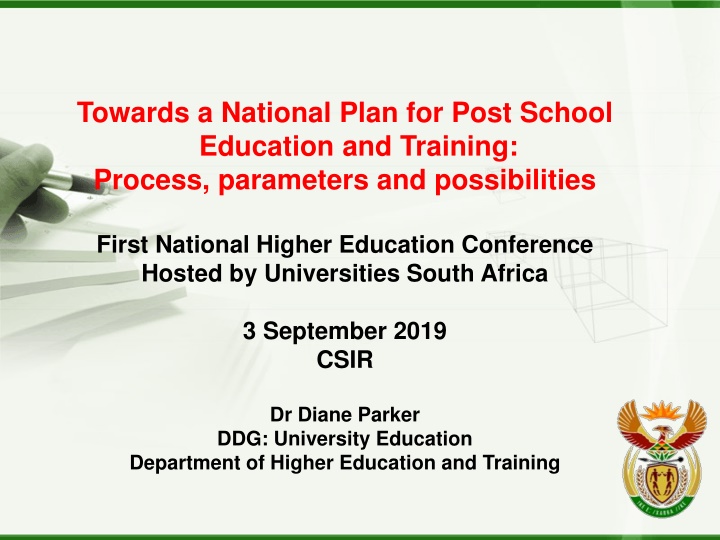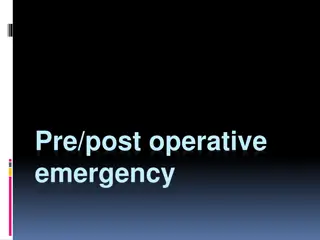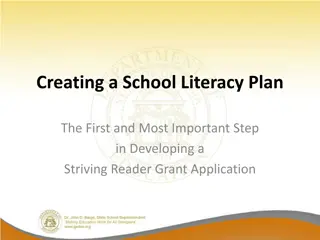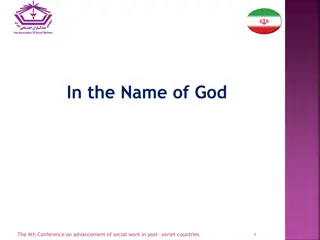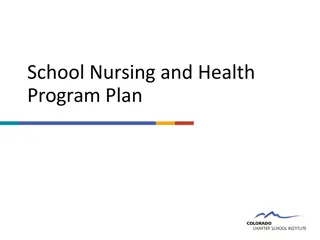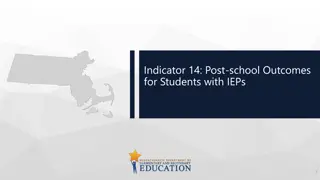National Plan for Post-School Education and Training Conference
National Higher Education Conference hosted by Universities South Africa provided an overview of the development process and key parameters of the National Plan for Post-School Education and Training. The conference discussed the background, purpose, and draft plan, as well as the goals, objectives, and outcomes of the proposed system. The plan aims to transform university education through a Theory of Change approach and aligns with the National Development Plan Vision 2030.
Download Presentation

Please find below an Image/Link to download the presentation.
The content on the website is provided AS IS for your information and personal use only. It may not be sold, licensed, or shared on other websites without obtaining consent from the author.If you encounter any issues during the download, it is possible that the publisher has removed the file from their server.
You are allowed to download the files provided on this website for personal or commercial use, subject to the condition that they are used lawfully. All files are the property of their respective owners.
The content on the website is provided AS IS for your information and personal use only. It may not be sold, licensed, or shared on other websites without obtaining consent from the author.
E N D
Presentation Transcript
Towards a National Plan for Post School Education and Training: Process, parameters and possibilities First National Higher Education Conference Hosted by Universities South Africa 3 September 2019 CSIR Dr Diane Parker DDG: University Education Department of Higher Education and Training
Overview Background to development of the plan Context Purpose of plan and key parameters Outline of draft plan System goals, objectives and outcomes Three PSET sub-systems overview Theory of Change for transforming university education 2
Background 2009 Establishment of the Department of Higher Education and Training 2012 National Development Plan Vision 2030 2014 White Paper on Post School Education and Training Building an expanded, effective and integrated PSET system; published January 2014 2015 Minister appoints 3 task teams, a technical integration team and steer com, to develop a National Plan for Post School Education and Training (NPPSET) to give effect to the WP 2016 Ministerial Task Teams commence work in February 2016 2017 Consultative draft completed (October 2017); new Minister 2018 New Minister (April); new draft completed (October 2018); 2019 Final draft completed (March 2019); new administration and Minister for HET and SI [WP SI published] 3
Pipeline from school to higher education (university) The journey from school to graduation: How many make it? 4 Reference: Broekhuizen, van der Berg, and Hofmeyr, 2016
University system performance how is the system doing? NDP Target Increase enrolments by 70% by 20130 (i.e. to 1.62 m) % staff with doctorates to 75% by 2030 more than 100 doctoral graduates per million per year (i.e. over 5,000 a year by 2030) number of graduates to increase 425,000 by 2030 SET enrolments must increase significantly throughput rate for degree programmes to increase to more than 75% 2010 892 936 2017 % increase 9.15 1 036 984 34% 1,420 46% 3 057 35.3 115.3 153 325 210 931 37.5 251 334 310 115 23.4 53.9%1 14.8%2 57.1%3 55.6%1 19.4%2 60.4%3 65.9% Note: 3 to 6 year diploma and degree programmes 1. 2005 and 2007 cohorts Distance and contact after 10 years; 2. 2005 and 2007 cohorts Distance after 10 Years; 3. 2005, 2007 and 2011 cohorts contact after 6 years 7
WE DO HAVE AN IMPROVING SYSTEM, BUT. This figure is 57.9% overall, but 66.4% for contact programmes and 23.2% for distance programmes. This figure is 15.9% overall, but 13% for contact programmes and 32.5% for distance programmes. National total dropout % after 1 year and throughput % after 8 years for 3 to 6 year undergraduate qualifications (contact and distance)
PERFORMANCE IS DIVERSE IN A DIVERSE SYSTEM. Throughput % after 8 years Dropout % after 1 year First year dropout rate (2015) and throughput rate after 8 years for the 2009 cohort in 3 & 4 year programmes* for all universities except UNISA *N Diploma; B Tech; u/g diploma or certificate; general academic first B degree; professional first B degree
PSET IN SOUTH AFRICA- AN ELONGATED LEAKING FUNNEL SYSTEM? Inefficient, wasteful and reproducing inequality? Workplace
Purpose of the Plan The National Plan for Post-School Education and Training is a roadmap for the development and reinvigoration of post-school education and training (PSET) over the next decade, from 2020 - 2030. The Plan identifies the goals, objectives and outcomes for PSET The Plan describes the implementation strategies, targets, and responsibilities for achieving the White Paper vision of an expanded, effective, and integrated PSET system The Plan formalises work already in progress towards the goals of the White Paper, including the National Skills Development Plan which is fully integrated into the Plan, and sets out an implementation plan for 2020 to 2030. By 2030 we aim to have developed a more socially just, responsive, and well coordinated PSET system, providing access to a diversity of quality education and training opportunities, where students have a reasonable opportunity for achieving success, and with vastly improved links between education and the world of work 11
Structure of draft NPPSET 9 Chapters organised according to system goals as expressed in the White Paper - Building an expanded, effective and integrated PSET system Chapter 1: Introduction to the Plan Chapter 2: Developing an integrated and coordinated PSET system Chapter 3: Expanding the PSET system Chapter 4: Improving the responsiveness of the PSET system Chapter 5: Improving relations between PSET institutions and the world of work Chapter 6: Improving the quality of the PSET system Chapter 7: Improving the efficiency and success of the PSET system Chapter 8: Resourcing and financing the PSET system Chapter 9: Implementation strategy 13
PSET system goals objectives and outcomes System goal Goal 1 Objectives Objective 1 Outcomes Outcomes To build a PSET system that is integrated and coordinated to achieve efficiencies and improve effectiveness 1.1 Clear and streamlined roles and responsibilities of all key stakeholders and role players 1.2 Improved capability for integration and coordination in the PSET system 1.3 A simplified National Qualifications Framework (NQF) 1.4 Increased articulation for students between and within the NQF sub-frameworks, and between and within institutions 1.5 Aligned policy and legislation An integrated and coordinated PSET system 14
PSET system goals objectives and outcomes System goal Goal 2 Expanded access to PSET opportunities Objectives Objective 2 Outcomes Outcomes To provide diverse students with access to a comprehensive and multifaceted range of PSET opportunities 2.1 Increased enrolment in all PSET sectors 2.2 Improved and equitable participation rates 2.3 Affordable student fees and accommodation 2.4 A sustainable student financial aid system 2.5 Strengthened institutional differentiation 2.6 Sufficient infrastructure to support teaching, learning and research 2.7 Sufficient staff to support expansion 15
PSET system goals objectives and outcomes Objective 3 System goal Goal 3 Objectives Outcomes Outcomes To provide qualifications programmes and curricula that are responsive to the needs of the world of work, society and students A responsive PSET system 3.1 A diverse range of qualifications relevant to the aspirations and needs of locality and responsive to community needs 3.2 A diverse range of programmes responsive to the world of work 3.3 A diverse range of mechanisms to improve research, innovation, commercialisation and entrepreneurship in higher education 16
PSET system goals objectives and outcomes System goal Goal 4 Improved interface between education and training institutions and the world of work Objectives Objective 4 To nurture a stronger and more cooperative relationship between education and training institutions and the workplace Outcomes Outcomes 4.1 Improved interface between education and training institutions and skills levy institutions 4.2 Improved links between education and training institutions and employers for workplace-based learning (WPBL) 4.3 Improved links between education and training institutions and industry to strengthen research and innovation 4.4 Strong cooperative relations between employers and education and training institutions 17
PSET system goals objectives and outcomes System goal Goal 5 Improved quality of PSET provision Objectives Objective 5 To build the capacity of PSET institutions to provide quality education and training Outcomes Outcomes 5.1 Improved quality of PSET teaching and learning 5.2 Improved quality of research 5.3 Well-managed and well- governed PSET institutions 5.4 Well-qualified staff in the PSET system 5.5 Improved quality assurance capability 5.6 Improved quality of infrastructure 5.7 Safe and healthy environment for students and staff 18
PSET system goals objectives and outcomes System goal Goal 6. Objectives Objective 6. Outcomes Outcomes To improve efficiency and success of the PSET system 6.1 Increased throughput in qualifications 6.2 Improved exit outcomes related to the world of work Improved efficiency and success of the PSET system 19
Three PSET Sectors (sub-systems) Community Education and Training (CET) CET colleges are new institutional type Focus on establishing CET colleges with clusters of Community Learning Centres across all localities Focus on building CET in terms of governance and management systems; student support services; staff quality and qualifications; improved infrastructure; progression opportunities for students; programmes responsive to local needs and demands: providing meaningful skills development opportunities; support for entrepreneurship and small business development 20 Target to enrol 1 000 000 students by 2030
Three PSET Sectors (sub-systems) Technical and Vocational Education and Training TVET colleges the cornerstone of the PSET system Public & private TVET colleges to enrol 2.5 million students by 2030 TVET colleges to prepare students for the world of work: for employment, entrepreneurship and sustainable livelihoods Strengthened and streamlined programmes and qualifications responsive to the knowledge and skills needs of South African society and industry Systematic enrolment planning informed by a thorough programme and qualification review Greater institutional differentiation, particularly through developing Centres of Specialisation Closer working relationships with industry, robustly supported by the SETAs Improved student support services and staff professional development 21
Three PSET Sectors (sub-systems) Higher Education Public and private HEIs to enrol 1.6 million students by 2030 Strengthened, responsive and purposefully differentiated HEIs Student-centred HE colleges, university colleges and universities Public higher education colleges established Improved quality of teaching and learning at all levels Strengthened research and innovation at universities Engaged institutions Developing and promoting African languages in HE, Optimising the use of new technologies, Rejuvenated and demographically transformed academic profession; Strengthened Internationalisation improved institutional management, governance, regulation and accountability 22
AN OVERARCHING THEORY OF CHANGE FOR TRANSFORMING UNIVERSITY EDUCATION Funding Policy Planning STEERING MECHANISMS Race Teaching and Learning Curriculum and Programmes Class Gender INEQUALITY Disability QUALITY Research and Engagement Leadership, Management and Governance Patriarchy Culture DEVELOPING PEOPLE, INFRASTRUCTURE, ORGANISATIONS AND SYSTEMS Language Organisations Professionals Infrastructure Knowledge Management University Academics Leadership Students Councils Systems Support and
Thank you 26
